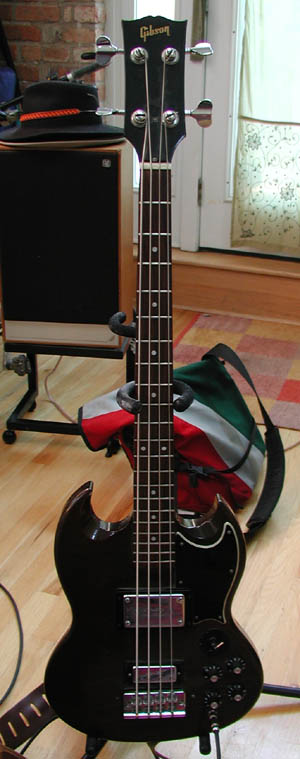 |
While I started on double bass, when I was in high school, I was given my Gibson as a Christmas present along with a Holmes Performer 115B amp. I still have and use both. This is the short scale version of the bass and I keep it strung with round-wound strings which helps keep the sound bright (when I got it, it had old flatwounds and a dull sound). I use Ernie Ball Hybrid Slinky strings because I like the heavy tension that the .105 gauge E string gives me.
The switch gives four different sounds: (1) neck pick-up: a straight, deep sound; (2) bridge pick-up: a bright, metallic sound; (3) neck and bridge: less bright, with more deep tones mixed in; (4) neck through choke: a lighter bass sound than comes from position 1.
Gibson basses have a bad reputation, which is partly justified, but with some care, an EB-3 can be a very good bass: As I mentioned, stringing with rounds helps brighten the sound. I will usually use position 1 or 4 with the tone controls set to 10 or 2/3 with the tone controls set to 1, either of which gives me a good full tone.
Another thing which helps is avoiding tube amps. There are those who will argue for their use with the EB-3 for authenticity, and while I won't argue that a tube amp is more authentic, I will argue that it just doesn't sound as good, at least with this bass. I almost exclusively play through keyboard combo amps these days (or straight to the board when that makes sense). My primary amp these days is a Roland KC-500, which gives me a nice buttery tone. I keep my old Peavey KB/A-60 at my band's rehearsal space which gives me adequate volume, if a rather harsh sound.